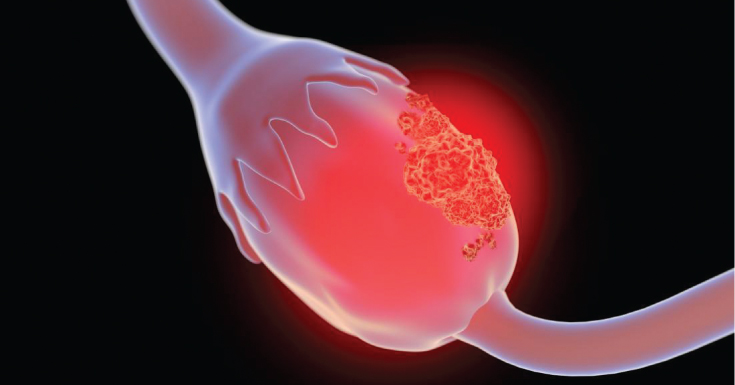In 2018, a woman in Connecticut had undergone removal of a tumor from her ovary that weighed 60kg! The symptom she had was merely a rapid increase in body weight over a few months. Luckily, the tumor was not malignant. She survived the operation and did not need any further treatment after the surgery.
However, had the growth been malignant, it would have proven how discreet its progression had been; in reference to the silent killer – ovarian cancer.
This type of cancer is the fourth most common cancer among women in Peninsular Malaysia. According to the Malaysian National Cancer Registry 2012-2016, ovarian cancer makes up 5.5% of female cancer cases with a 1.6% lifetime risk in the general population.
Ovarian Cancer: An Introduction
Ovaries are the female reproductive organs that produce eggs as well as female hormones, estrogen, and progesterone. Ovarian cancer is cancer arising from different types of cells within the ovaries.
The majority of ovarian tumors or growth are benign (not cancerous), especially in the reproductive age group. For malignant/cancerous ovarian tumors, a germ cell tumor is more common in those younger than 30 years old, and epithelial ovarian cancer is more common in women above 40 years old.
Factors Determining Risks
Evidently, the risk factors of ovarian cancer are related to two major categories, namely ovulation and family history.
Studies have shown that the early onset of menses, late menopause, first childbirth at age 35 and older, the use of androgen or fertility drugs as well as obesity with a body mass index of at least 30 kg/m2, increase the risks of ovarian cancer. Furthermore, postmenopausal women using estrogen monotherapy for at least five to 10 years have a higher risk of developing ovarian cancer.
Women younger than 25 years old at pregnancy and first childbirth and are breastfeeding, carried a 30 to 60 percent lower risk. Additionally, women who have been taking Oral Contraceptive Pills for more than five years have a significantly lower risk of ovarian cancer.
The Link to Colorectal Cancer
About 15 percent of ovarian cancers are genetically related. If a first-degree relative (parent, sibling, or child) develops ovarian cancer before age 50, the risk increases six to 10-fold. If two or more close relatives are affected, the lifetime risk rises by 40 percent. Those with a family history of colorectal cancer have a higher risk of ovarian cancer. This familial risk is associated with the gene mutation.
As for other cancers, the risk of ovarian cancer increases with age. It is most prevalent in the eighth decade of life. Risk also increases among those with a personal history of breast cancer.
Vigilance is Prevention
There is no sure way to prevent ovarian cancer but be on the lookout for possible symptoms as well as genetic counseling for those with a family history of cancers that may help. Maintaining healthy body weight and a well-balanced diet as well as leading a healthy lifestyle can decrease the risk. To date, there are no reliable screening tests for ovarian cancer for the general population.
Like many cancers, ovarian cancer may not produce symptoms in the early stages. However, at an advanced stage, the common symptoms include abdominal bloating or a feeling of pressure or abdominal/pelvic pain, early satiety, unexplained weight gain/loss, or abnormal vaginal bleeding.
Procedures to Diagnose
As for the diagnosis, most ovarian cancers are diagnosed in its advanced stage. Even in more advanced cancers, symptoms and signs are vague and nonspecific. To come to a diagnosis, the following can be expected:
- A pelvic examination; the first step in evaluating a patient with a known or suspected diagnosis of ovarian cancer.
- Ultrasound; this uses sound waves to create an image of internal organs, including the ovaries, uterus, and cervix.
- Computerized Tomography (CT) scan; this helps diagnose ovarian, fallopian tube, or peritoneal cancer.
- Magnetic resonance imaging (MRI); to detect tumors or recurrences in other areas of the body, such as the head.
- Positron emission tomography (PET) scan; this is an imaging test that helps reveal how your tissues and organs are functioning. A PET scan uses a radioactive drug (tracer) to show this activity. This scan can sometimes detect a disease before it shows up on other imaging tests.
The Fight against Ovarian Cancer
Cancer treatment is particularly challenging because most cases are detected at an advanced stage due to the absence of symptoms in earlier stages.
- The mainstay of treatment is surgery; to locate and remove visible signs of cancer in a process called debulking surgery.
- Chemotherapy; to deliver high doses of chemotherapy drug combinations to the tumors, while reducing damage to the rest of your body.
- Radiotherapy; to deliver high dose radiation to kill the cancer cells.
- Targeted therapy; to block the enzyme poly ADP-ribose polymerase (PARP) from identifying damaged DNA inside cancer cells. PARP inhibitors may stop cancer cells from repairing themselves.
In conclusion, get to and stay at a healthy weight, practice regular physical activities and consume a healthy well-balanced diet with plenty of fruits and vegetables. Knowing yourself, your family history, and your risks, will go a long way in curtailing the incidence of ovarian cancer.
For further details, seek professional medical advice.

Consultant Obstetrician & Gynecologist
Columbia Asia Hospital – Klang

















